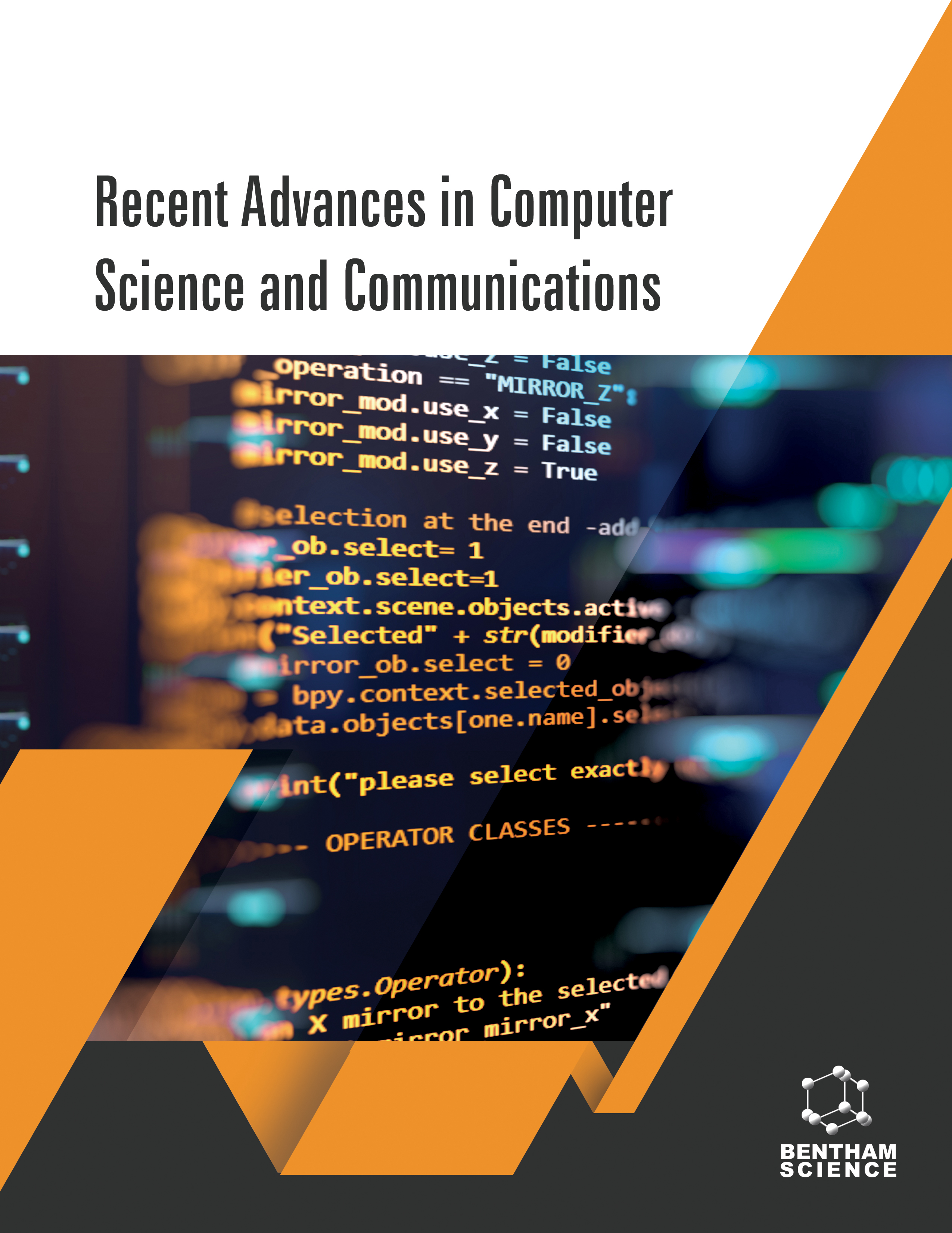- Home
- A-Z Publications
- Recent Advances in Computer Science and Communications
- Previous Issues
- Volume 16, Issue 2, 2023
Recent Advances in Computer Science and Communications - Volume 16, Issue 2, 2023
Volume 16, Issue 2, 2023
-
-
An Infrared and Visible Image Fusion Approach of Self-calibrated Residual Networks and Feature Embedding
More LessAuthors: Jinpeng Dai, Zhongqiang Luo and Chengjie LiBackground: The fusion of infrared images and visible images has been a hot topic in the field of image fusion. In the process of image fusion, different methods of feature extraction and processing will directly affect the fusion performance. Objectives: Low resolution (small size) of high-level features will lead to the loss of spatial information. On the other side, the low-level features are not significant due to their insuffici Read More
-
-
-
Securing Hybrid Architecture of Cloudlet Computing in 5G Networks Enabling IoT and Mobile Wireless Devices
More LessAuthors: Tarek S. Sobh and Awad H. KhalilAims: This research aims to secure and support mobile devices and IoTs enabled in WLAN and 5G Multi-Access Edge Computing (MEC) infrastructures. Background: Currently, wireless network access gains increasing potential in today's networks. At the same time, such ongoing wireless network access also raises the risk of network attacks. The 5G technology is expected to empower people's inter-communicatio Read More
-
-
-
A Retrieval Method for Spatiotemporal Information of Chorography Based on Deep Learning
More LessBackground: On retrieving Spatiotemporal Chorography (STIC) information, one of the most important topics is how to quickly pinpoint the desired STIC text out of the massive chorography databases. Domestically, there are no diverse means to retrieve spatiotemporal information from the chorography database. Emerging techniques like data mining, Artificial Intelligence (AI), and Natural Language Processing (NLP) should Read More
-
-
-
Comparison of Soft Computing and Optimization Techniques in Classification of ECG Signal
More LessAuthors: Prerak Mathur, Pooja Sharma and Karan VeerElectrocardiogram (ECG) is a visual representation of the heartbeat that can be used to detect cardiac problems. It helps in detection of a normal or abnormal state of heart diseases. Therefore, it is difficult to detect the cardiological status with naked eyes. So, features extraction from ECG signal is crucial to recognise heart disorders. After selecting significant features, classification can be done by Machine Learning (ML), an Read More
-
-
-
Assessment of Various Scheduling and Load Balancing Algorithms in Integrated Cloud-Fog Environment
More LessAuthors: Jyotsna and Parma NandCloud computing is a rapidly developing computing technology, which enables to process and store large volumes of information along with providing services to numerous end users across various disciplines. Due to ever-increasing demand with the introduction of technologies like IoT, cloud servers processing capability and storage capacity are rapidly saturating, creating lag in response time. The lag in response time c Read More
-
-
-
Contemporary Approaches to Analyze Non-stationary Time-series: Some Solutions and Challenges
More LessAuthors: Ankit Dixit and Shikha JainEnhancement of technology yields more complex time-dependent outcomes for better understanding and analysis. These outcomes generate more complex, unstable, and highdimensional data from non-stationary environments. Hence, more challenges are arising day by day to fulfill the increasing demand for future estimation. Thus, in this paper, an extensive study has been presented to comprehend the statistical comp Read More
-
-
-
A State of the Art Review on User Behavioral Issues in Online Social Networks
More LessAuthors: Nidhi A. Patel and Nirali NanavatiSocial networks are aimed at information sharing and friend-making due to the rapid development of Online Social Networks (OSN) and the increasing number of online users. The OSNs are also becoming an ideal platform for merchandise recommendation, opinion expression, information diffusion, and influence generation. Different types of social network services and users select the appropriate social networ Read More
-
-
-
Deep Image Segmentation Using a Morphological Edge Operator
More LessAuthors: Mei Zhang, Bin Xu and Jinghua WenBackground: Segmentation of deep images is a difficult, persistent problem in the computer vision field. This paper aimed to address the defects of traditional segmentation methods with deep images, presenting a deep image segmentation algorithm based on a morphological edge operator. Methods: Deep image edge features were first extracted using three traditional edge operators; the edge and tip type jump edges were Read More
-
Most Read This Month
Article
content/journals/rascs
Journal
10
5
false
en


